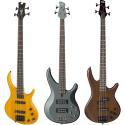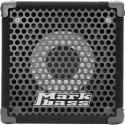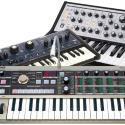Bass In Music: Improving Music By Understanding its Role
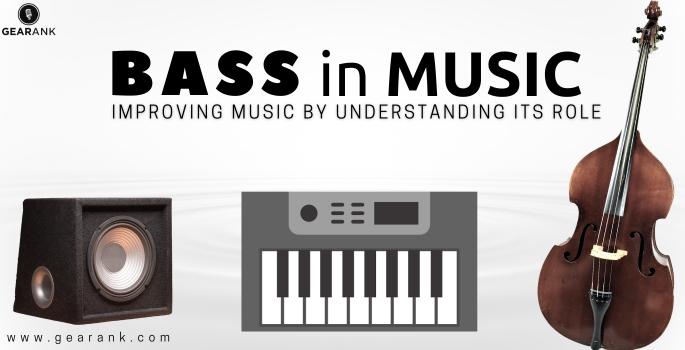
What gives the music its body or its pulse? It's the low frequency notes being played.
From the figured bass of the Baroque Era to the 808 basslines found in hip-hop, the bass has played a key role in shaping musical genres.
Low-frequency notes have a visceral impact. The thump of the bass drum (kick drum) and the bass guitar are felt miles away and they make everyone dance and move along with its rhythm.
In this article, I will provide you with an intuitive overview of what bass in music is. Here we will explore:
-
The function of bass.
-
Tips for creating bass lines.
-
Common bass sounds.
Before anything else, what is music made of?
At the core of this universal language, music consists of three essential elements: melody, harmony, and rhythm.
The melody is a succession of single notes-- the highlight or the foreground of a song or composition.
Harmony consists of 2 or more notes simultaneously sounded. It is responsible for the overall musical texture of a song.
Rhythm is the element responsible for the movement of music in time. It could be fast, slow, consistent, or syncopated.
These three combined make up the elements of music.
Where does the bass fit in between all of this?
What Is The Function of Bass?
The bass is the backbone that holds all of the instruments together. It provides the low frequencies that give a musical composition or a song a "body" that can be felt by the listeners.
Bass is what gives music the depth it needs to be more impactful. Take a listen to a few of these examples of songs without bass.
(Insert Video Here: Why bass is important in metal (songs without then with bass))
It's not just what you hear but how it feels.
The bass in music is not just a series of notes it plays--it's the feeling of the groove it provides that keeps the listeners tapping their feet to the song. Without it, the track sounds flat and lacking energy.
There are several functions that bass can do in music, and these include:
1. Harmonic Function
One of the key roles of a bass line is defining the function of a chord progression. Where the low-frequency notes land, the entire feel of a song or composition also changes.
For instance, you have the C chord being played by the guitar or a synth pad in the 5th octave. Instead of assigning the bass to a lower C, I can put the bass in A and it now sounds like an Am7.
The bass notes played act as an anchor for the other instruments or synths by providing the root note or inversion of the chord being played. This harmonic support can make piano and guitar chords sound different depending on the bass note.
There's a reliable saying that you won't know the chord until the bass player plays his note.
2. Rhythmic Function
In addition, bass plays as a bridge between rhythm and harmony. The drums act as the main driver of the rhythm while the bass aids with the pulse of the song.
By playing different rhythmic patterns, the bass serves as a bridge between the rhythm and harmony. By accentuating certain notes or playing offbeat patterns, the bassist can make the same chord progression sound differently.
3. Adding Depth
Like I said in the beginning, the bass creates low-end depth and adds texture to a song or composition. For instance, you can withhold the bass in the verse and introduce it in the chorus to put emphasis.
The bass player can create a feel reminiscent of music genres. Bass can be used to punctuate the heaviness of a song.
4. Creating Tension and Release
Varying the rhythm in different sections is a way to give the same notes a whole new feel. Instead of just playing root notes of the chord, you can create tension by playing the fifth or even the 3rd of the chord to give it movement.
Playing the same series of notes in a different register can also add some nuance to the song, making it more dynamic to the listeners. Play non-chord tones that lead other instruments to a different chord has also become a common music trope.
5. Bringing Emotion to Music
Since the bass is felt so much, you can punctuate a section of a song to bring importance to it. With subtle nuances and inflections, the bassist can create an emotional response in listeners that can stay with them if the bassline is memorable enough. Take Billie Jean or Another One Bites the Dust--the first song leaves everyone dancing, the last makes the lyrics memorable.
This makes bass frequencies a key element of any orchestra, band, or DJ set. Just the weightiness of their notes in a sound system truly gives them a vital role in bringing emotional weight to a piece.
Tips for better basslines
Creating good basslines is a matter of experimentation and discovering one's style. Regardless of whether you're a bassist or not, these guidelines will help you get started immediately.
1. Follow the chord progression.
How good the bass part is will depend on what chord progression is being played by other instruments or synths. You can start by following the chord progression as it is first to get the feel for it. Let's say we have C, Bm7 and G chord.
In the next steps, we will try to find ways to record or sequence the bass and experiment with different rhythms and notes. For now, this is our point of reference.
2. Create a bassline rhythm
Now that you've plotted the bass notes, you want to find out what feel you're going for. Do you want the bass to create a pulse or do you want it to follow the rhythm of the kick drum?
A pulsing bass is pretty a common bassline in electronic music. What you do is divide the whole note into 8th notes or more.
Another thing you can do is to simply follow the kick drum. If you already have a drum pattern, the bass acts as a support to reinforce the groove of the song. You can find this technique being widely used in rock music, disco, hip-hop, and other styles.
3. Add some variations
Regardless if you want to create a pulse or a groove, you don't always have to play the root of the note all the time. Let's take our C chord. Change it up by throwing in the 5th or the octave of the chord and listen if it makes the progression of the song more interesting.
It's common to do a call-and-response between idle moments in the song. For instance, if you have vocals that aren't singing in some parts, you can write a melody for the bassline that fills in the gap.
Bass guitars and synths can also add percussive elements to songs. Use this to good effect.
4. Don’t overdo it
The key takeaway with creating basslines is how to make the entirety of the track sound good together. You can ruin a track easily if the bass is way too active that it overshadows the other instruments in the track.
Provide the bassline that the song needs and you should be fine. Maintain an interesting groove that will stick to the listeners.
Different Types of Bass Sounds
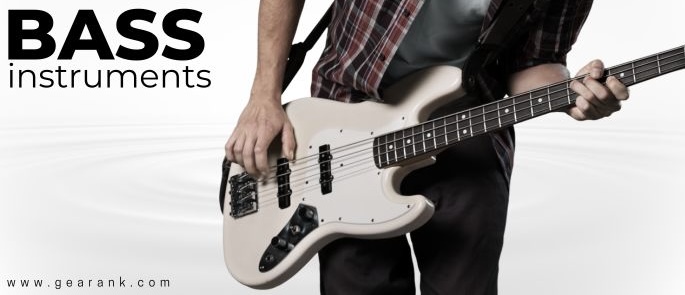
Now that we have discussed the role of bass in music, let’s take a look at some of the bass sounds you'll most likely encounter. This list will not only help a bassist with methods of playing, but also music producers and composers who are seeking to use these different sounds in their musical context.
Since there are lots of crossovers between genres, this list isn't supposed to be definitive, but it serves as a point of reference for people who just want to get started.
Electric Bass Guitar
The electric bass guitar is one of the most popular instruments for bassists. Different types of electric bass will give you different tones for a signature sound. The electric bass commonly has 4-strings, but 5 and 6-string variations are also available in the market.
You'll most likely encounter this sound in:
-
Pop
-
Rock
-
Disco or dance music
Acoustic Bass Guitar
Similar to the electric bass, acoustic bass guitars usually have four strings and come in both fretted and fretless models. The acoustic bass doesn't have to be plugged into an amplifier to sound audible. This makes it good for go-to jamming sessions where no setup is required.
Upright Bass
The double bass upright bass is a member of the violin family--commonly used in jazz, classical, and folk music and produces a warm, full-bodied sound that many musicians find appealing. Upright basses require specialized techniques and can be difficult to learn if you are not experienced with the instrument.
You'll most likely encounter this sound in:
-
Classical
-
Jazz
-
Tango music
-
Traditional country and folk music
Synth Bass
By far one of the most essential tools in your arsenal is being able to design your bass voice. Designing your own light or heavy bass instruments with sheer flexibility is only possible with a synthesizer.
Different sounds and textures are made possible by dialing the different knobs that are responsible for how the sound behaves. Synthesizers have brought the most sought-after sounds in electronic music such as the 808, pulsating, supersaw, Reese, or sub bass, just to name a few.
It's the bass sound you'll hear in any electronic genre, such as:
-
EDM
-
Hip hop
-
Lo-fi
There are plenty of other bass sounds you can use, including bass clarinet, tuba (lowest pitched wind instrument), ukulele bass instrument, and more. The are even unique electric guitar designs that add bass strings for playing deep bass notes.
In addition to having the right bass instruments, part of getting a good bass sound is having the right speakers. Generally, speaker cabinets with big woofers can better handle the low frequency rumbling of deep bass sound. A 12" may suffice, but 15" is better, especially for heavy bass music. Even better if you go for a dedicated PA subwoofer.
Final Thoughts
Low frequencies have the power to get us to move our bodies along with the rhythm. Bass is an essential part of melding all of the instruments together.
Without it, the underlying pulse of the rhythm section would be lacking, and there would be no groove to anchor each instrument on.
While these tips are built for beginner music producers, I'd suggest familiarizing yourself with the different ways bass is used in different musical genres.
It's a great way to learn how different rhythmic patterns are done in different styles. Getting to know the common vocabulary of each musical style intuitively will be a great help in creating basslines faster.
Now read our article about what is eq in music to pick up on some more insights you may not know.
Contributors:
- Allen Articulo - Co-writer
- Jerry Borillo - Illustrator



